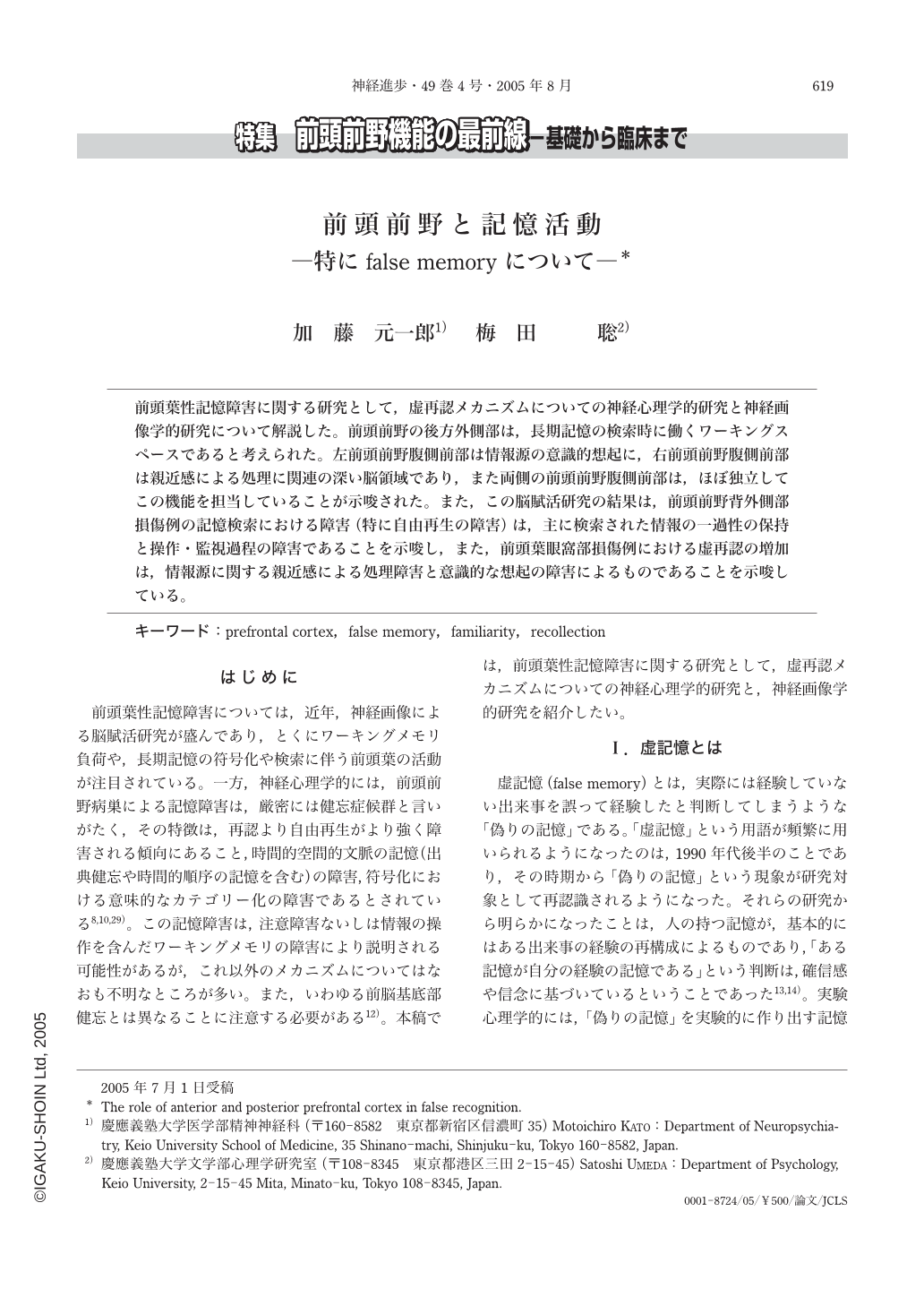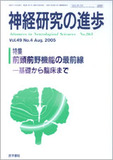Japanese
English
- 有料閲覧
- Abstract 文献概要
- 1ページ目 Look Inside
前頭葉性記憶障害に関する研究として,虚再認メカニズムについての神経心理学的研究と神経画像学的研究について解説した。前頭前野の後方外側部は,長期記憶の検索時に働くワーキングスペースであると考えられた。左前頭前野腹側前部は情報源の意識的想起に,右前頭前野腹側前部は親近感による処理に関連の深い脳領域であり,また両側の前頭前野腹側前部は,ほぼ独立してこの機能を担当していることが示唆された。また,この脳賦活研究の結果は,前頭前野背外側部損傷例の記憶検索における障害(特に自由再生の障害)は,主に検索された情報の一過性の保持と操作・監視過程の障害であることを示唆し,また,前頭葉眼窩部損傷例における虚再認の増加は,情報源に関する親近感による処理障害と意識的な想起の障害によるものであることを示唆している。
Neuroimaging studies of human memory demonstrated that the prefrontal cortex(PFC)was activated during episodic memory retrieval. We investigated the role of anterior and posterior prefrontal cortex in false recognition by neuropsychological studies and by event-related functional magnetic resonance imaging(MRI)and the functional connectivity method. In the neuropsychological study, we administered the typical false recognition paradigm to eight patients with ventromedial prefrontal cortex(VMPFC)lesion. The VMPFC patients showed significantly higher false alarm rate than the normal subjects for lure words, suggesting that the VMPFC patients were more likely to fail to retrieve past similar events. In fMRI study, subjects were first asked to try to remember a series of associate-word lists outside the MRI scanner in preparation for a later recognition test. In the MRI scanning phase, they were asked to make recognition judgments in regard to old words, semantically related lure words, and unrelated new words. The right anterior PFC showed a greater signal change for false alarm than for hit and correct rejection. The signal increase in the right anterior PFC was greater for false alarm responses led us to speculate that the excessively high sensitivity to familiarity in the right anterior PFC may be a cause of the frequent occurrence of false alarm responses. The finding of a greater signal change in the left anterior PFC for correct rejection than for hit and false alarm suggests a major contribution of the left anterior PFC to systematic source monitoring or conscious recollection. The analysis of functional connectivity revealed that the posterior PFC in each hemisphere had strong functional interconnections with the contralateral posterior PFC, whereas the anterior PFC in each hemisphere had only weak functional interconnections with the contralateral anterior PFC. These findings support the hypothesis of an associative contribution of the bilateral posterior PFC to episodic memory retrieval and a dissociative contribution of the bilateral anterior PFC.

Copyright © 2005, Igaku-Shoin Ltd. All rights reserved.


